by Andrea Carson | Mar 1, 2023 | Retirement
You’re probably well aware that saving for retirement is essential. For most of us, 100% employer-funded pensions are long gone, and Social Security is only designed to offset a portion of your pre-retirement income.
Most financial advisors recommend that workers save enough to cover 75 to 85 percent of their annual pre-retirement income. With stagnant incomes and rising expenses such as healthcare, food, and housing, it’s challenging for most of us to save for retirement!
You can boost your retirement savings, regardless of your age or how strained your existing budget might be.
Use these steps to increase your retirement savings and secure your financial future:
- Save now. If you aren’t already contributing to a 401(k) or other employer-defined retirement plan, start now.
- Start small if traditional contributions of 10% of your income are too much to handle. Try saving just 1 to 2 percent of your gross income. Boost your savings each year by increasing your contribution rate to match the amount of your annual raise.
- You have a 100% instant return on your investment when your employer matches a percentage of your 401(k) contribution. When you enroll in your employer’s plan, contribute at least the minimum to qualify for any match your employer offers.
- Open a traditional or Roth IRA if your employer doesn’t offer a 401(k) plan. Traditional IRAs can help you lower your annual tax bill, free up hundreds of additional dollars to increase your retirement savings. Resist the urge to spend your savings!
- Work longer and retire later. Delaying retirement will boost the amount of your social security benefits and give your savings extra time to grow.
- Early retirees see a permanent reduction of 20% of their estimated benefits. By delaying retirement, you’ll draw a more significant benefit from Social Security and shorten the length of time that you’ll need to draw upon your retirement savings.
- As you approach retirement age, look for ways to create additional income streams separate from your primary occupation, such as freelancing or starting a small business. Increasing your revenue streams frees up more funds that you can use to bolster your retirement savings.
- Get out of debt before you retire. Debt payments often comprise a large portion of most budgets. Debt also eats up funds that you could use for retirement savings.
- Create a realistic, workable budget that eliminates your debt over a specific time frame.
- Aim to be out of debt before you retire so that you need to save less for your retirement.
- As you decrease your debt, the challenge is to remain disciplined rather than going into debt again or wasting your retirement savings on other expenses.
- Downsize before retirement. As you create a budget, take a hard look at how much your home is costing you. Is it time to consider downsizing to a smaller place with lower costs?
- Many of us relocate during retirement for a warmer climate or to be closer to children and grandchildren. Consider selecting a smaller home with lower costs for operation and upkeep if you move.
- You can downsize more than just your home. Sell off unused items and use the proceeds to boost your retirement savings.
Finding ways to save money for your later years can be a difficult and time-consuming chore. However, following these tips makes it easier to increase the money you save for retirement.

by Andrea Carson | Feb 22, 2023 | Finances, Getting Out of Debt
The nation’s student loan debt is over $1 trillion and is more significant than its collective credit card debt, but there are also 5 million ex-students who are delinquent with their payments.
Student loans are unique because they’re among the few debts not discharged with bankruptcy. The only reliable way to get out of your student loans is to pay them off. Only a federal judge can let you out of your obligation to pay, and they don’t do that often.
A slip can haunt you for a long time.
People frequently get into trouble with their student loans, making getting a mortgage or a car loan much more difficult. While credit repair agencies can do a lot to help remove bad credit history attached to debts that are paid off, current debts are another story.
This process makes it easier to handle your student loans effectively:
- Assess your situation. Student loans can be confusing. You’ll likely have more than one loan, which different financial organizations made. The company servicing the loan might be completely different from the one that provided the loan.
- A great central source of information is the National Student Loan Data System. This resource may provide all the important dates and other information about your loans, including the services.
- Your credit report can be a good way of tracking down the information regarding your private loans. Your college should also have the information you require. However, personal student loans are not covered in that data system.
- Ensure your information is current. For example, the address listed belongs to your parents. When you have your address, you should change your data accordingly.
- Update all the applicable information, including your email address and phone number. You want to know when there is an issue with your account.
- Create a strategy for repayment. Your options depend on whether your loans are federal or private.
- Federal loans have very flexible repayment options. You can extend your payments out as far as 25 years. You can establish a plan with lower payments now and higher payments later on. Payments can even be a function of your income.
- There can be other options for private loans, but they will vary depending on who made the loan. Be sure to call them and see what other options are available.
- Consider automatic payments. Federal loan interest rates are reduced by 0.25% if your payments are taken automatically out of your bank account. Similar deals are usually available with private loans. Either way, you’ll always be on time if the charges are automatically removed from your account.
- Be focused. Debt is like a slow leak that keeps draining money away from you. It would be wiser to put any extra funds towards higher interest-rate debt. But if your student loans are your only real debt, put some extra money toward the principal when possible.
- Consider a second job to get rid of those loans quicker. Student loan interest rates are relatively low, but the payback period is extended. The interest adds up over ten years or more. Pull out a calculator and look at the cost.
- Create a goal of making all of your payments on time. Create a second goal of paying your loan back early.
While making loan payments is never fun, it’s a fact of life for most adults at one time or another. Dealing with student debt is a big responsibility. It could be a newly graduated student’s first big responsibility. Get on top of the situation now, and the future will be much brighter.


